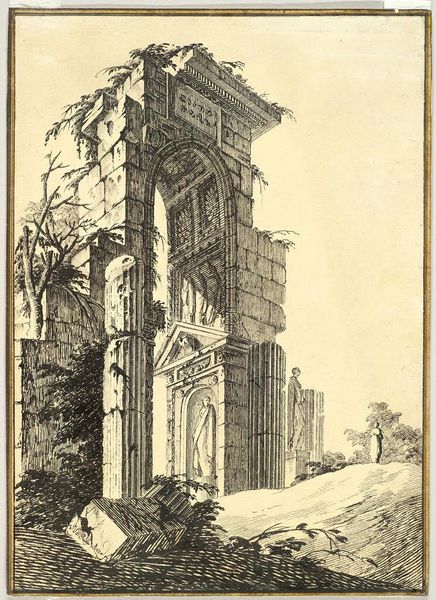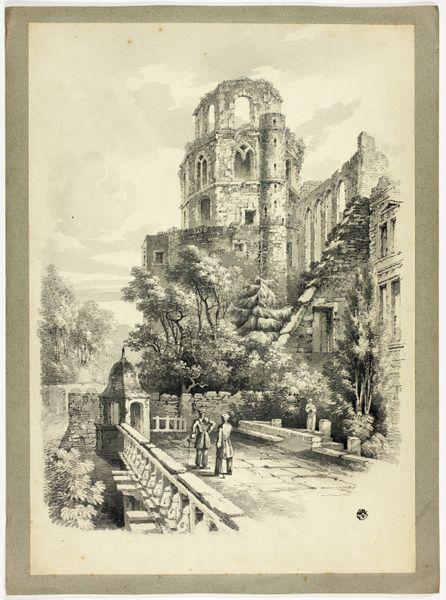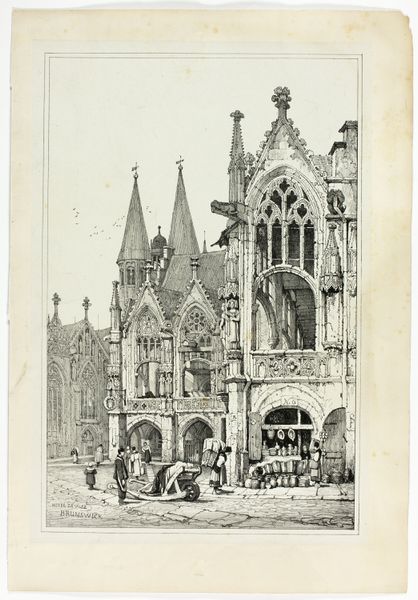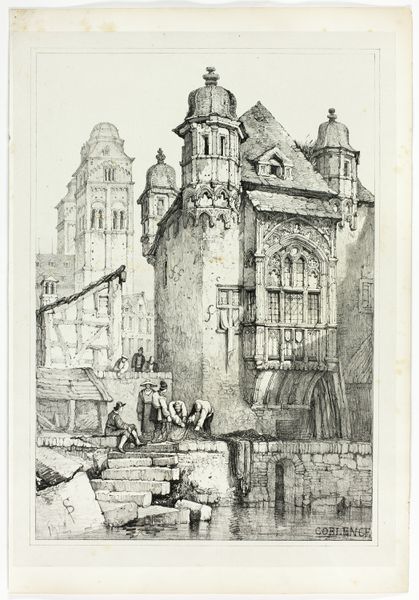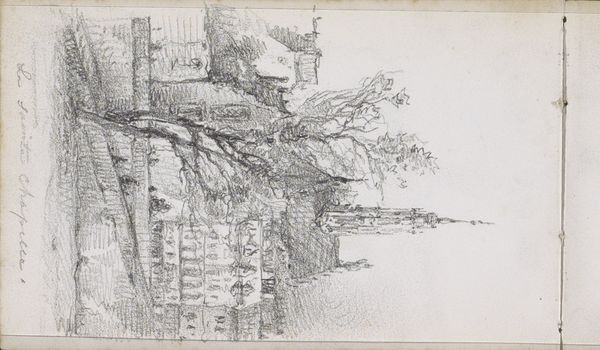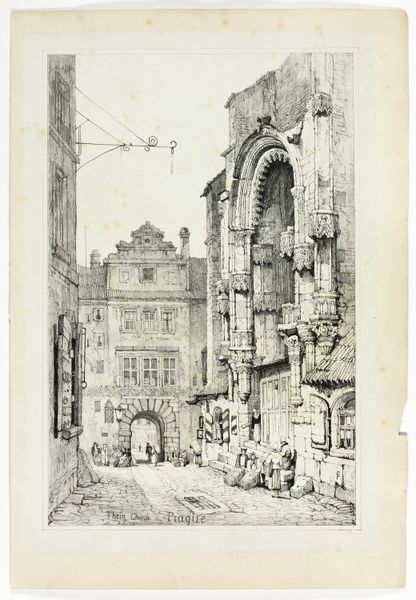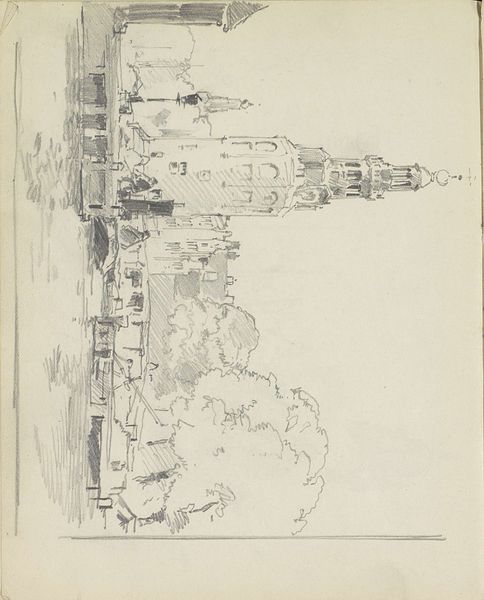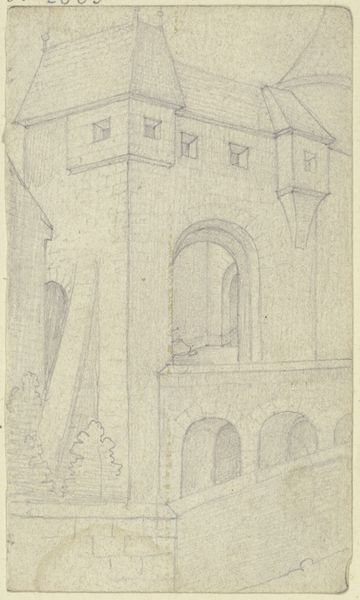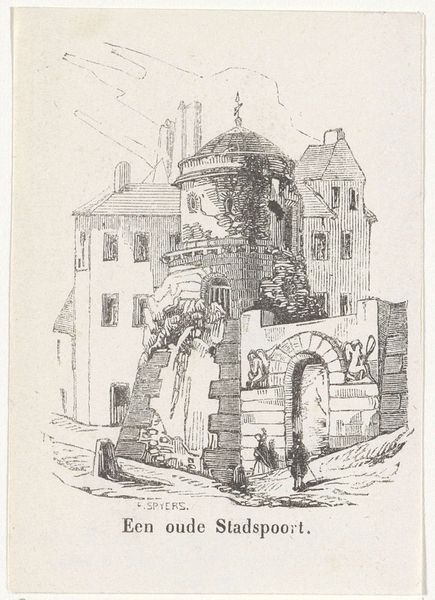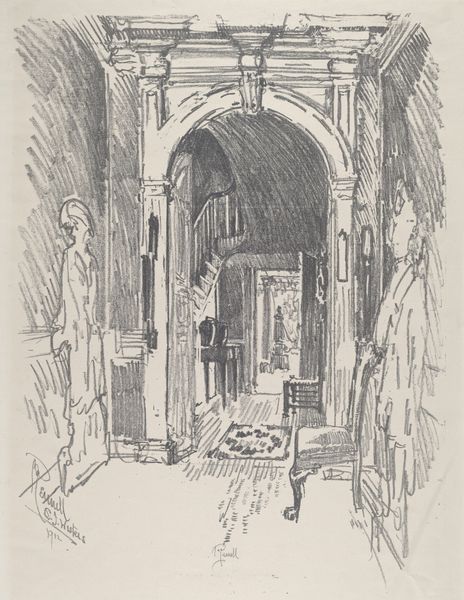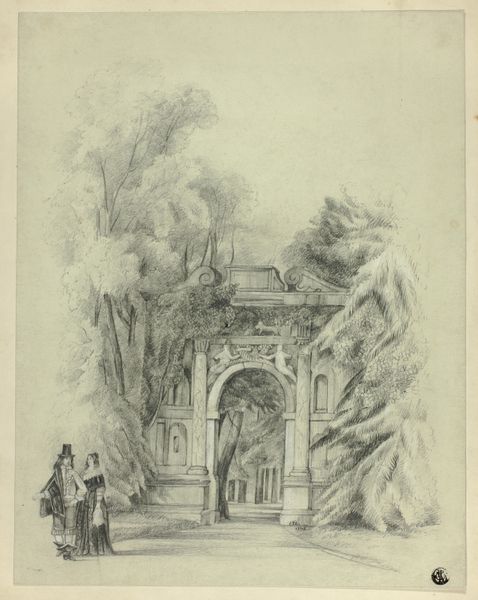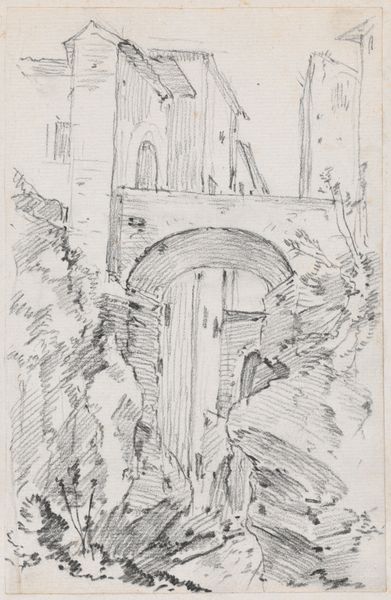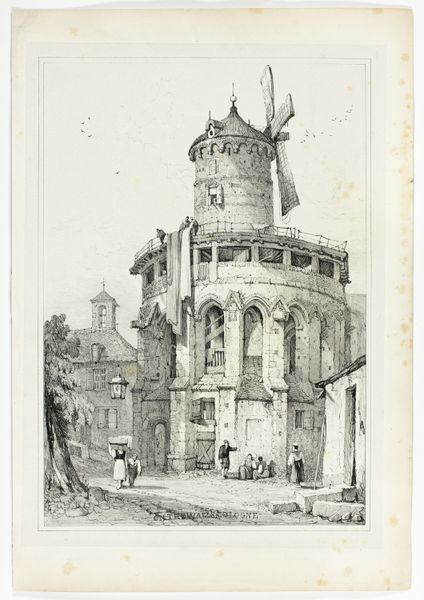
drawing, paper, ink, pencil
#
drawing
#
medieval
#
pen sketch
#
landscape
#
paper
#
romanesque
#
ink
#
pencil
#
cityscape
#
realism
Copyright: Rijks Museum: Open Domain
Curator: There’s a haunted, melancholic feel about this one, wouldn't you agree? The artist, Otto Verhagen, created this pen, ink, and pencil drawing, "Abdij van Villers-La-Ville," sometime between 1930 and 1934. Editor: It does evoke a sense of romantic ruin. What’s most striking to me is the material economy of the drawing. Look how Verhagen makes such complex architecture emerge with seemingly minimal marks and lines. Curator: The economy of marks almost mirrors the real world processes by which the abbey met its ruined state. Nature reclaims the stones slowly and steadily, just as the artist has reclaimed a moment in time through simple lines. It's allusive, ghostly. Editor: The process seems deliberate, highlighting the slow attrition of materials. Note the paper itself; it’s not pristine. Those subtle stains speak volumes about the drawing's own history as a material object. It begs the question—is it really realism, as it's often labeled? I see Verhagen interrogating ideas of permanence in a modernizing world. Curator: Perhaps "poetic realism?" This abandoned place... Was it a symbol of his inner world, too? Did its destruction mirror a sense of loss he was feeling? Editor: That interpretation could add a rich emotional layer. But I tend to circle back to the material: Consider the easy access to pencils, paper, and ink in that era versus, say, the effort involved in quarrying the stones for the abbey itself. Vastly different levels of production and consumption, captured on a single page. Curator: So, for you, it’s less about personal anguish and more about comparing material circumstances across time. I find it fascinating how easily we can get lost in these silent ruins. Editor: Exactly! The drawing documents loss but also invites us to consider how different generations engage with materiality in such contrasting ways. Curator: In the end, whether ruin or reverie, it's a potent reminder of how much history a few skilled lines can contain, isn't it? Editor: Absolutely. It really underlines the tension between art's fleeting capture and architecture's intended durability, making the ephemerality all the more poignant.
Comments
No comments
Be the first to comment and join the conversation on the ultimate creative platform.
